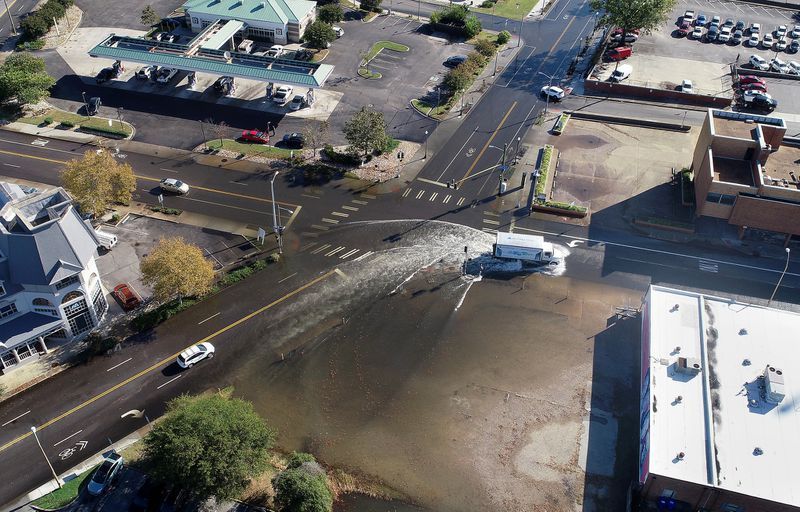In Norfolk, sea level rise reduces some stormwater system capacity by 50%, data shows
Published on by Water Network Research, Official research team of The Water Network in Case Studies
 In Hampton Roads, rising tides have started to turn some of the region’s stormwater systems — which are meant to usher rainwater into ponds, lakes and rivers via underground pipes — against this coastal community.
In Hampton Roads, rising tides have started to turn some of the region’s stormwater systems — which are meant to usher rainwater into ponds, lakes and rivers via underground pipes — against this coastal community.
The result has become a familiar sight for some residents, said Kyle Spencer, a deputy resilience officer with the city of Norfolk. Sometimes, a modest storm will have just started and water will immediately start pooling around a street’s storm drain.
And for the first time, the city now has data to support the anecdotes. StormSensor, a start-up based in Seattle that was drawn to Hampton Roads by a grant from a local resilience-focused nonprofit, placed about 25 sensors inside pipes in Norfolk to collect data on tidal backflows into the system and measure storm drain capacities.
The data shows that in some of Norfolk’s most flooded neighborhoods, the city’s stormwater system is running at about half capacity due to sea level rise, significantly hampering its ability to handle heavy rainfalls.
“Almost all the time — high tide or low tide, it doesn’t seem to really matter — the main lines are 50% full of water,” Spencer said. “When you think about managing rainfall … it’s going into a pipe that you thought was 36 inches tall, it’s only 18. We lose a ton of system capacity.”
The aim of StormSensor’s is to not only provide real-time alerts of when these backflow situations could become dangerous, but also to provide granular data that will help Norfolk optimize new flooding solutions, said Suzie Housley, product manager and stormwater scientist with StormSensor.
The nonprofit RISE, which gave the company roughly $280,000 to collect the data, has worked with other sensor startups in the past to study flooding here. But what makes StormSensor unique is the placement of their technology, focusing on the effectiveness of a city’s stormwater systems instead of the severity of street-level flooding, said Paul Robinson, the executive director of RISE.
“This is exactly what we envisioned when we put the program together over the past years,” said Robinson, whose Norfolk-based nonprofit offers funding for small businesses that have devised fixes to flooding and other problems caused by climate change.
Companies like StormSensor can use Hampton Roads as a ”living laboratory to develop and test new ideas, to help the city out and take the technology out to other markets,” he said.
The company has placed 15 sensors in pipes near Tidewater Gardens and another 10 along St. Paul’s corridor. And the sensors around Tidewater Garden have detected tidal water all the way from the Elizabeth River to a mile and a half inland, Housley said. At some sensors closer to the river, the pipe is more than 90% full of water without rain.
“That’s purely because of sea level rise and water from the Elizabeth River pushing inwards,” Housley said. “Half of that pipe that was designed to carry stormwater — it’s just not available to carry stormwater.”
Even when you get a mile inland, it’s still 20% full of water, she said. Spencer said the city could consider putting in additional sensors, such as around the Hague, to get better information on other areas throughout Norfolk.
The next step is, of course, fixing the problems and adapting future plans. Officials will have to consider pump stations, backflow preventers or retrofitting current systems, which could include expanding pipes. Each solution carries a hefty price tag.
Taxonomy
- Stormwater Management
- Stormwater
- Storm Water Management